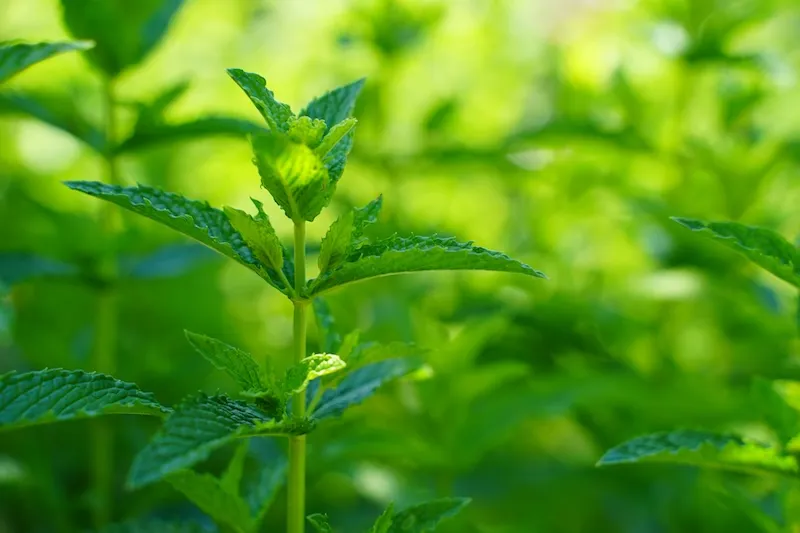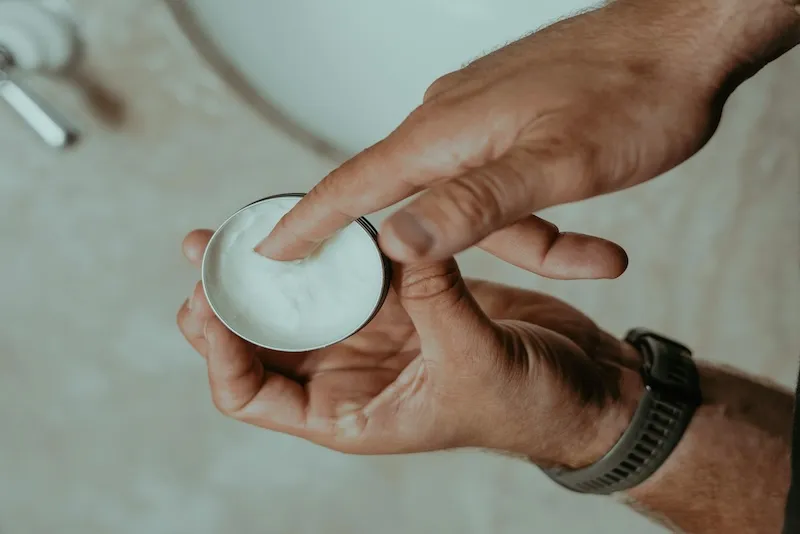Comfrey
Nature’s miracle – The Healing Herb

Choosing to incorporate nature’s miracle, comfrey into my herbal preparations, such as healing balms and poultices, is a decision rooted in its remarkable healing abilities. In Cambodia, where access to medical resources can be challenging, comfrey serves as a reliable remedy for various first aid needs and joint discomfort. Its proven efficacy in promoting rapid wound healing and soothing inflammation makes it an invaluable addition to my herbal toolkit. By harnessing comfrey’s natural properties, I ensure I have a potent and accessible solution for addressing common health issues effectively, supporting holistic well-being in challenging environments.
I have several compelling reasons why comfrey leaves are a staple in my herbal freezer. Comfrey is a rapid wound healer. Known as “bone knit,” comfrey leaf accelerates tissue repair and promotes faster healing of wounds and cuts. Comfrey has anti-inflammatory properties to reducing swelling and inflammation associated with injuries.
Comfrey provides natural pain relief, particularly beneficial for joint pain, sprains, and strains. Comfrey supports overall skin health, aiding in the treatment of bruises, scrapes, and skin irritations. Comfrey is rich in nutrients such as allantoin, which promotes cell regeneration and enhances skin healing processes.
What Is Comfrey?

Comfrey (Symphytum officinale) is a perennial herb characterized by its black root, broad and rapidly growing hairy leaves, and bell-shaped flowers that can vary in colour. Originally native to Europe and parts of Asia, comfrey is now also found in North America.
Throughout history, comfrey has been highly valued for its medicinal properties, particularly in the treatment of ailments related to bones and wounds. Its nicknames “knit-bone” and “bone-set” reflect its traditional use in promoting bone healing and wound recovery. The Latin name Symphytum derives from the Greek words symphysis (“growing together”) and phyton (“plant”), underscoring its historical association with healing.
Comfrey ointments have been a staple in folk medicine for centuries, applied topically for pain relief, bone mending, reducing inflammation, promoting joint health, and treating bruises.
The therapeutic benefits of comfrey are attributed to its various constituents, with allantoin and rosmarinic acid being particularly notable. Allantoin supports cell regeneration and wound healing, while rosmarinic acid contributes to its anti-inflammatory properties.
Moreover, comfrey contains essential nutrients such as vitamin C, which is crucial for collagen synthesis and maintaining skin health. This combination of constituents makes comfrey a versatile herb for both external and internal applications in traditional and modern herbal medicine practices.
The many health Benefits of Comfrey

Comfrey is celebrated for its numerous health benefits. These health benefits make comfrey a valuable herb in both traditional and modern herbal medicine practices, supporting various aspects of physical health and well-being which include-
- Wound Healing – Comfrey accelerates wound healing due to its ability to stimulate cell proliferation and tissue regeneration.
- Anti-inflammatory – It reduces inflammation and swelling, making it effective for treating joint pain, arthritis, and muscle sprains. Research published in the British Journal of Sports Medicine highlighted the efficacy of topical comfrey creams in treating acute back pain.
- Bone Health – Known as “knit bone,” comfrey aids in healing fractures and strengthening bones, thanks to its high content of allantoin and other beneficial compounds.
- Skin Care – Comfrey supports skin health by soothing irritations, treating burns, cuts, and bruises, and promoting the healing of skin conditions like eczema and psoriasis.
- Pain Relief – It provides natural pain relief, particularly beneficial for sore muscles, back pain, and joint discomfort.
- Digestive Health – Comfrey can aid digestion and alleviate gastrointestinal discomfort when consumed as a tea or tincture.
- Respiratory Support – It has been used traditionally to support respiratory health and alleviate coughs and congestion.
- Nutrient Source – Comfrey is rich in vitamins (such as A, C, and B12) and minerals (including calcium, potassium, and phosphorus), providing essential nutrients for overall health.
- Hair and Nail Care – It promotes healthy hair growth and strengthens nails when used in herbal preparations or applied topically.
- Anti-microbial – Comfrey exhibits antimicrobial properties that can help fight infections and promote overall immune function.
Comfrey applications

Comfrey is indeed valued for its diverse applications in natural remedies. Here’s an expanded look at its uses –
- Poultice – Comfrey is highly regarded for its ability to aid in healing bone fractures, sprains, and muscle/joint pain when applied as a poultice. To make a poultice, you can crush fresh comfrey leaves or use dried comfrey root and mix it with water to form a paste. This paste is then applied directly to the affected area and covered with a clean cloth or bandage. The natural compounds in comfrey, such as allantoin, contribute to its soothing and healing properties.
- Ointment or Healing balm – Comfrey is commonly infused into ointments or healing balms for topical application on wounds, cuts, and abrasions. These formulations help in wound healing by keeping the affected area moisturized, promoting cell regeneration, and protecting against infections. Comfrey’s anti-inflammatory properties can also reduce swelling and pain associated with minor wounds.
- Lip balm – Incorporating comfrey into lip balms or salves can nourish and protect lips, preventing dryness and chapping. Its emollient properties make it suitable for soothing cracked lips and maintaining overall lip health.
- Black Drawing Salve – This traditional remedy includes comfrey along with other herbs and is used to draw out foreign objects like splinters or to help with minor infections. It’s applied topically to the affected area, covered, and left for a period to draw out impurities. Due to its potent nature, it’s important to use black drawing salve with caution and follow proper preparation guidelines.
- After Birth Sitz Bath – For postpartum care, comfrey can be added to a sitz bath or peri bottle. This helps in soothing the perineal area, reducing inflammation, and promoting healing after childbirth. It provides comfort and accelerates recovery during the sensitive postpartum period.
Is Comfrey Safe?

While these uses highlight comfrey’s potential benefits, it’s crucial to note the controversy surrounding its internal use due to potential liver toxicity. Therefore, internal use should only be considered under the guidance of a healthcare professional. When using comfrey externally, ensure you source it from reputable suppliers, or make your own. Use it according to safe practices to maximize its benefits while minimizing any potential risks.
Here are some key points to consider based on current understanding –
Considerations for External Use –
- Generally Safe for External Use: Comfrey is typically considered safe for external applications in adults and children aged three or older. It’s commonly used in poultices, ointments, and salves for wound healing, joint pain, and other skin conditions.
Concerns Regarding Internal Use –
- Pyrrolizidine Alkaloids (PAs): Comfrey contains pyrrolizidine alkaloids (PAs), which are compounds known to potentially cause liver damage and liver disease when ingested internally or used over extended periods.
- Research and Recommendations: Studies have shown that high levels of isolated PAs can be harmful when directly administered to animals, leading to liver toxicity. Human cases of liver damage associated with comfrey use have also been reported, particularly when consumed in large amounts or over prolonged periods.
- Precautionary Measures: To mitigate risks, it’s advised to avoid internal use of comfrey, especially if pregnant, breastfeeding, or dealing with liver issues or cancer. It should not be combined with other substances that may affect liver function, such as alcohol, pain relievers, or certain herbs like kava, skullcap, valerian, or CBD oil.
Personal Approach and Recommendations –
- Err on the Side of Caution: Given the potential risks associated with internal use, many herbalists and health experts recommend caution and avoiding internal consumption altogether. This cautious approach helps minimize potential health risks associated with PA exposure.
- Consultation with Healthcare Professionals: Before using comfrey or any herbal remedy, it’s crucial to consult with a healthcare provider, particularly if considering internal use or if there are existing health concerns. A qualified herbalist or healthcare professional can provide guidance tailored to individual health needs and circumstances.
Takeaway

While comfrey offers notable benefits for external use in treating wounds, joint pain, and skin conditions, its internal use remains controversial due to potential liver toxicity associated with PAs. Practising informed and cautious herbal medicine usage ensures safety and efficacy. Always prioritize consultation with healthcare professionals to make informed decisions about herbal remedies and their suitability for individual health situations.
Disclaimer
Always consult your doctor or a clinical herbalist before trying any new herbal remedy, as there’s always the possibility of unintended consequences, allergic reactions, or interactions with other medications. If you’re harvesting wild plant material, ensure you are 100% confident in your identification and consult multiple sources for verification. The following information is based on my research and personal experience, but I do not claim to have any certifications that would qualify me to advise you on your health. Please conduct your own research and verify with multiple reputable sources before proceeding with any herbal remedies.
Have you used comfrey to help a broken bone or for other uses? Please share below!







